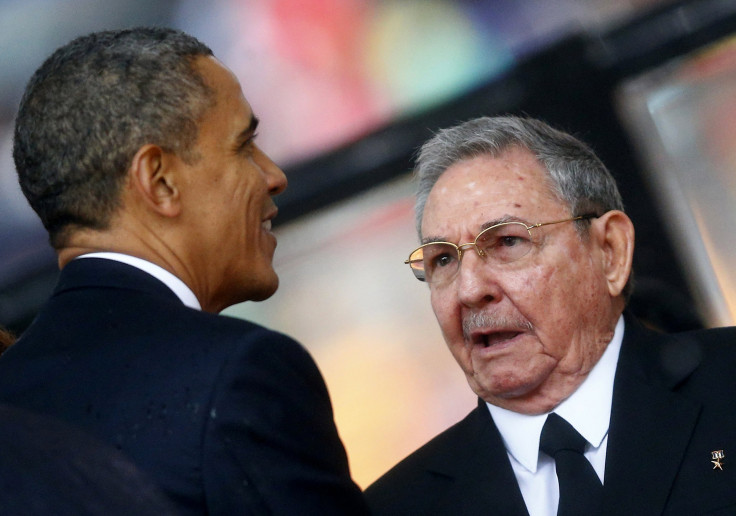US Cuba Relations: A Timeline Of The Cuban Embargo

The United States announced it would restore full diplomatic relations with Cuba and open an embassy in the country following the release of an imprisoned American contractor Wednesday. The breakthrough in diplomatic relations after decades of hostility between the two governments is expected to result in an easing of restrictions on remittances, travel and banking relations with Cuba, as well as the release of 53 Cuban political prisoners, according to the New York Times.
“We will end an outdated approach that for decades has failed to advance our interests and instead we will begin to normalize relations between our two countries,” said President Barack Obama in a nationally televised statement from the White House. As historic as these steps may be, the long-standing embargo on Cuba, put in place to pressure and weaken the Castro Communist regime, would officially remain for the time being, reported the Times. The Obama administration has indicated it would welcome an effort by Congress to ease or lift the embargo, with an increasing number of Americans favoring the measure, according to the Atlantic. Below is a timeline of the U.S.’ decades-old embargo of Cuba:
Oct. 19, 1960: The administration of President Dwight D. Eisenhower broke off diplomatic relations with Havana and imposed a trade embargo on exports to Cuba. Relations between the two countries had been deteriorating following Fidel Castro's seizure of power in 1959, particularly after the Castro government nationalized all U.S. businesses in Cuba without compensation.
Feb. 7, 1962: The administration of U.S. President John F. Kennedy announced a complete economic embargo on Cuba. The restrictions on travel and trade mandated by the policy took a significant toll on the Cuban economy, which had relied heavily on the U.S.
1966: A law was passed by President Lyndon B. Johnson allowing Cuban asylum seekers arriving in the U.S. the opportunity to pursue citizenship.
April 20, 1980: The Castro regime announced that Cubans wishing to emigrate to the U.S. would be allowed to board boats at the port of Mariel. The mass emigration of 125,000 people in the days that followed became known as the Mariel Boatlift.
March 12, 1996: The passage of the Helms-Burton act, sponsored by U.S. Sen. Jesse Helms, R-N.C., and Rep. Dan Burton, R-Ind., formalized the American embargo of the island nation which, until that point, remained in effect as a presidential order from the time of the Kennedy administration. The act also tightened the embargo by penalizing foreign investors doing business with Cuba and stipulated that the embargo could be lifted only under very specific circumstances, including the removal of the Castro regime.
Aug. 19, 1997: Washington agreed to temporarily ease its travel ban and embargo on the country during the visit of Pope John Paul II in January 1998. The decision enabled Catholics to travel to Cuba during his visit.
March 20, 1998: President Bill Clinton allowed for the easing of controls on humanitarian shipments of food and medicine, also providing Cuban-Americans the opportunity to send up to $1,200 a year to their relatives in the country.
October 10, 2003: In response to a crackdown on human rights by the Castro regime, President George W. Bush announced a measure to tighten sanctions on the country, including increased border inspections of travelers and shipments between the two countries.
May 2009: The Obama administration lifted restrictions on Cuban-Americans traveling and sending money to Cuba, also allowing U.S.-based telecommunications firms to seek business on the island.
© Copyright IBTimes 2024. All rights reserved.






















